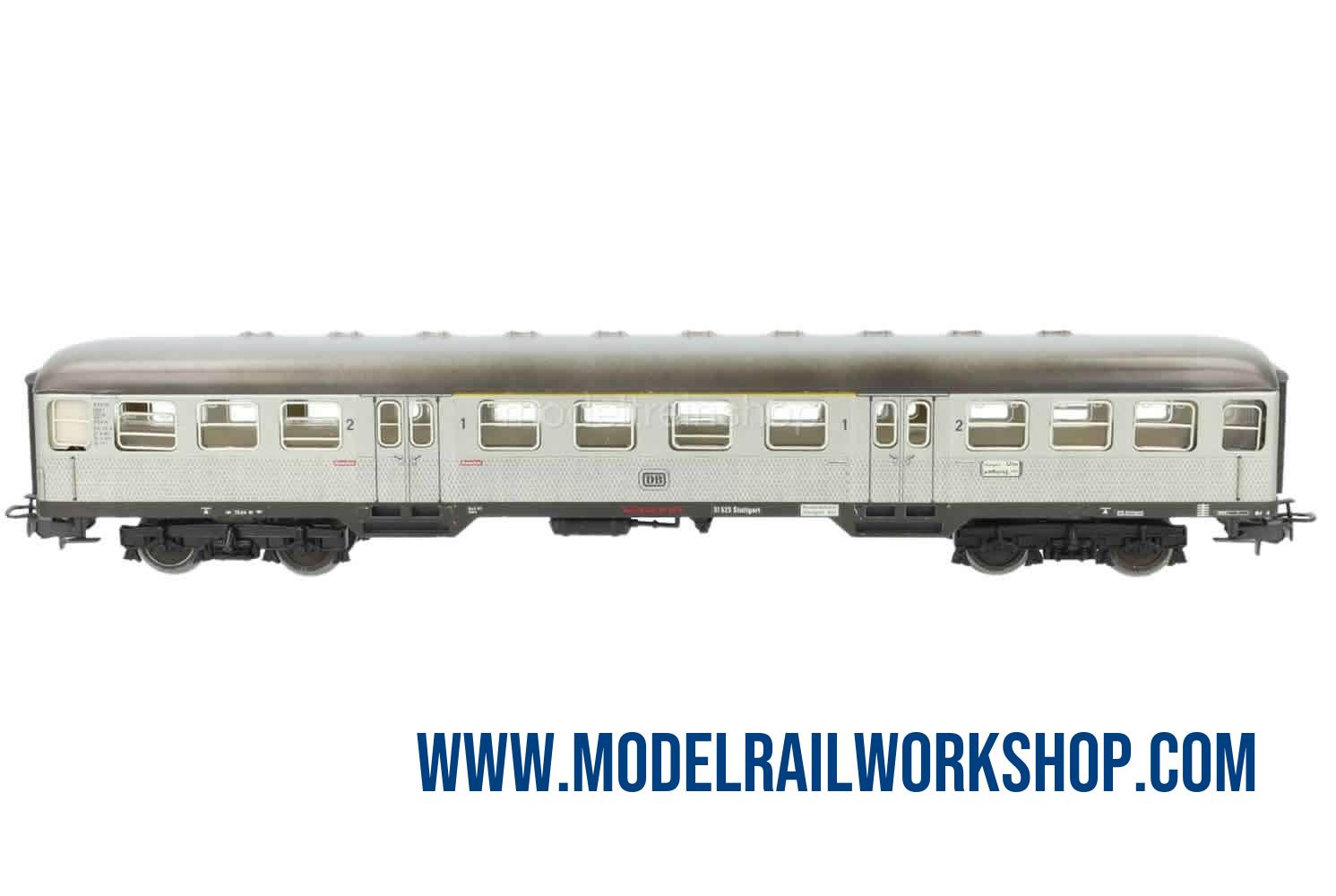| Silberling car with 1st/2nd class, sheet metal housing, Peacock-eye decoration, the lower edge of the car is black, no interior furnishings
Edition 1963 - 1964, train route sign inscription Dortmund - Essen No. 31 003 Essen, windows made of cellon panes without a silver frame
Edition 1965
Plastic windows with silver frames
Edition: 1966 - 1969,
train route sign inscription Stuttgart - Ulm No. 31 523 Stg
Source: 3-rail-wiki
More than 5,000 of these carriages were built in the period 1960 to 1982. The carriages have a length of 26.4 metres and are equipped with double entry doors. The carriages were initially equipped with block brakes and were approved for a maximum speed of 120 km/h. The later versions were equipped with disc brakes and were approved for a maximum speed of 140 km/h. The carriages were painted in different colours. In the early years, many carriages were in a brushed metal colour and later in an ocean blue/beige colour scheme. These carriages were nicknamed Silberlinge because of their silvery appearance. At the end of the 1980s, many carriages were painted in a white/mint green colour and were therefore nicknamed Mintlinge. At Deutsche Bahn AG the carriages were painted in traffic red with white decorative lines. The nickname was Rotlinge.
The carriages were used throughout Germany, often in combination with Umbau carriages. The Silberlinge carriages were also regularly seen on the Dutch railways, such as on the Nijmegen-Kleve line and to Groningen. They were also sporadically used on neighbouring country and D-trains, such as between Cologne - The Hague CS, which until the early 1980s still ran with blue plan N and K carriages. |
